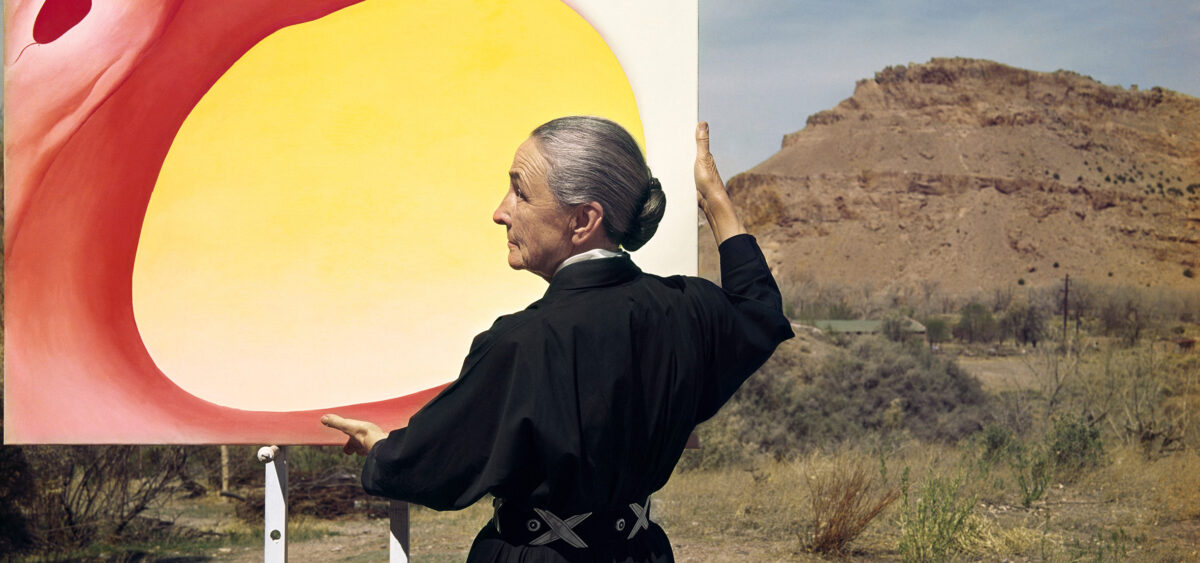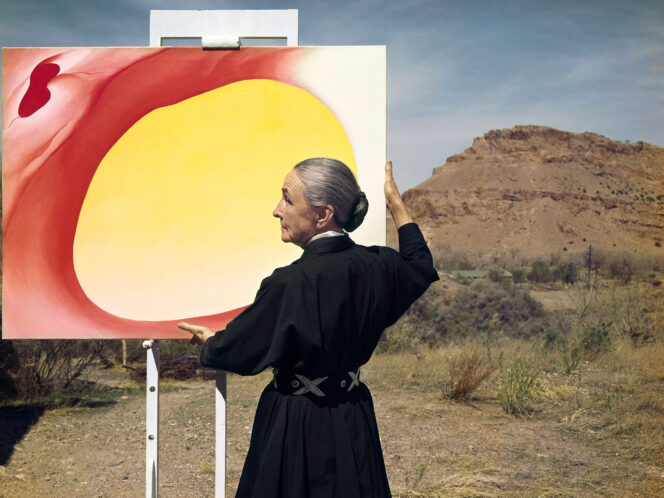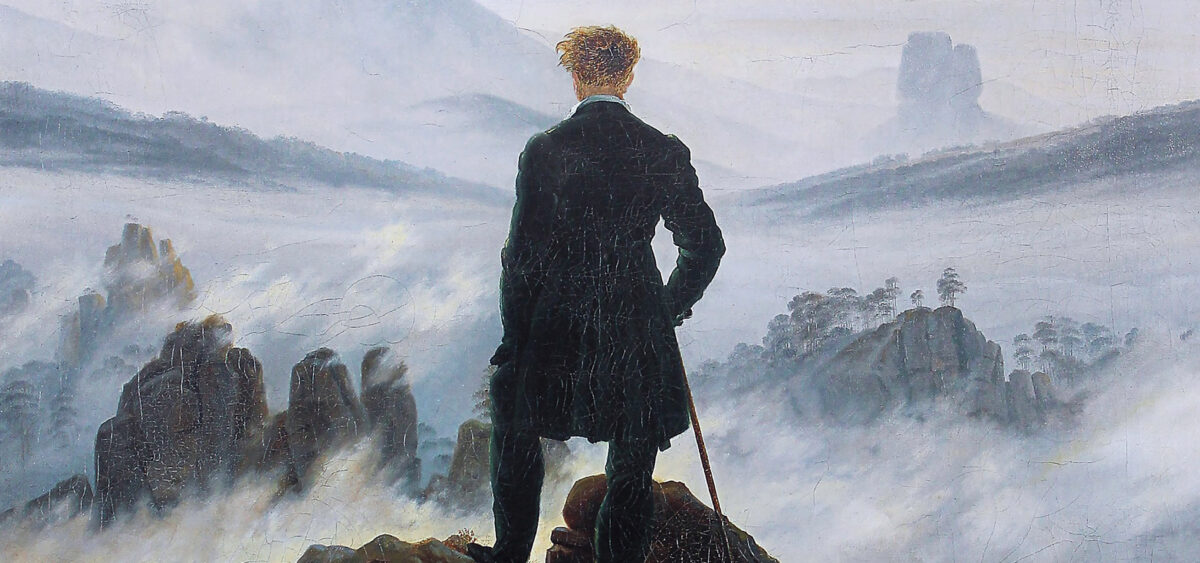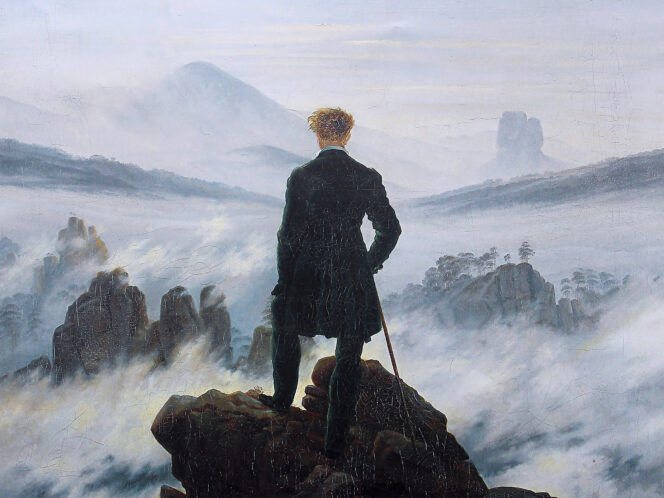
They would call her the mother of American art. She saw beauty in both flowers and animal bones, and successfully developed a new language in painting: both sensual and precise, realistic and abstract.
The last, 39th, place at the triangular table The Dinner Party, an artwork by Judy Chicago, belongs to Georgia O’Keeffe. Completed in 1979, this monumental installation – nowadays considered an icon of feminist art – celebrates diverse art by women and symbolically restores them to their rightful place in the history of Western culture. Each place setting consists of a china plate, embroidered table runner, gold ceramic chalice, napkin and cutlery. Below the table, on the floor made of porcelain tiles, there are inscribed the names of a further 999 women guests: poets, artists, mystics, warriors, historical and mythological figures, about whom our civilization, out of spite, would rather not remember.
The first place setting represents the Primordial Goddess. The plate depicts a butterfly, whose wings are not yet fully open whereas its thorax, as Chicago clarifies, epitomizes the hot interior of both the Earth and human soul. The whole picture, however, brings to mind the intimate parts of the female body. The plate sits on the table runner embellished with calfskin and little white shells. O’Keeffe, who takes her seat at the table as the last one, occupies pride of place right next to the Primordial Goddess. The motifs adorning her plate are shaped similarly to those on the Goddess’s plate and remind us, at the same time, of one of her most famous paintings: a black iris with a dark inside and purple and pink petals. O’Keeffe, recognized as the mother of American art, who made ostentatiously beautiful close-up portraits of flowers – as if from the bee’s or butterfly’s perspective – embodied unshakeable female power both in her life and art. Courageous, uncompromising, defiant, committed to the ideas of artistic and personal








